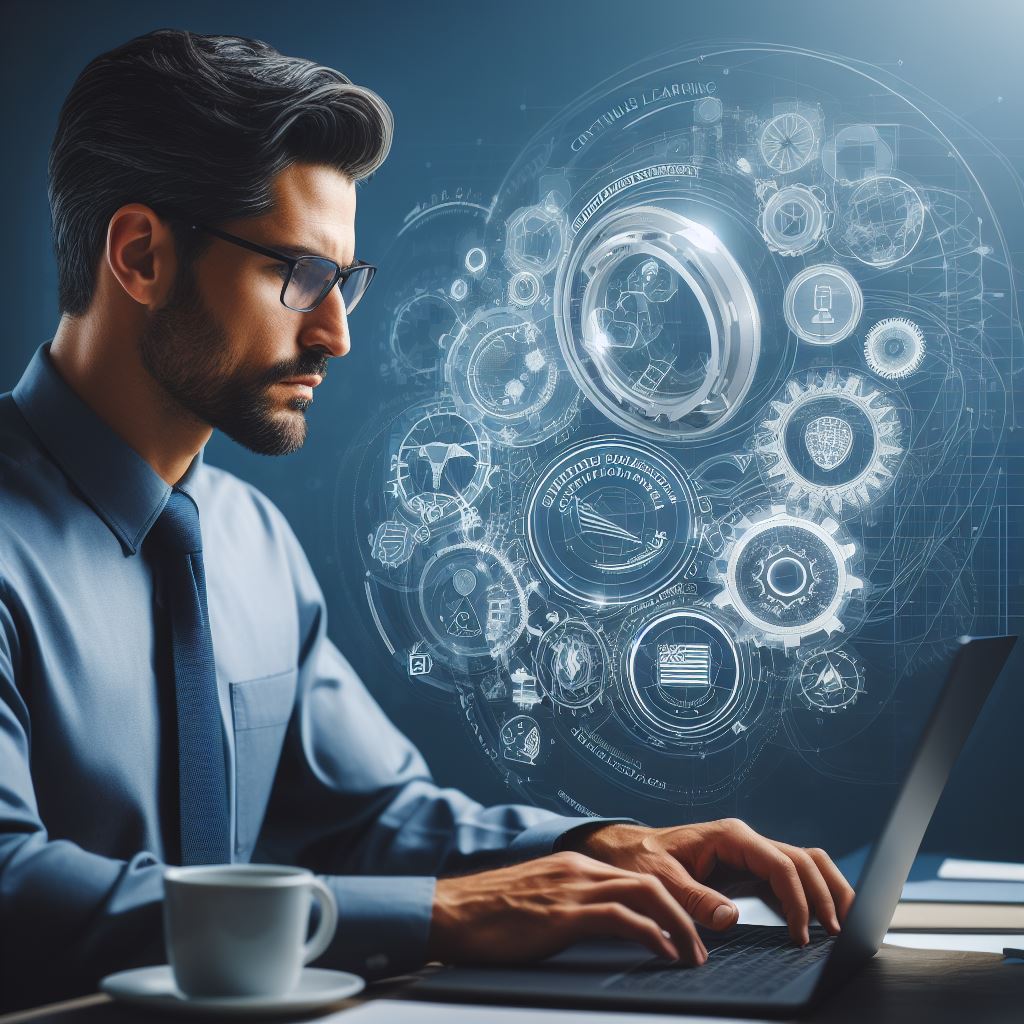Introduction
Mechanical engineering plays a crucial role in the development and progress of various industries in the United States.
As technology continues to advance, the field of mechanical engineering is rapidly evolving to meet the changing needs and demands of society.
Overview of the Importance of Mechanical Engineering in the U.S.
Mechanical engineering is essential for the innovation and improvement of a wide range of products and systems.
From automotive and aerospace industries to energy and healthcare sectors, mechanical engineers contribute significantly to the growth and efficiency of various sectors in the U.S.
Their expertise is vital in designing and manufacturing cutting-edge technologies that enhance performance and sustainability.
Rapidly Evolving Nature of the Field
The field of mechanical engineering is constantly evolving due to advancements in technology and emerging trends.
Engineers are now focusing on developing sustainable solutions to address global issues such as climate change and energy conservation.
Additionally, the integration of digital technologies, such as artificial intelligence and virtual reality, is revolutionizing traditional engineering practices, offering new possibilities and optimization techniques.
Rapid prototyping and additive manufacturing techniques are also transforming the way products are designed and manufactured, allowing for faster and more cost-effective production processes.
In fact, mechanical engineering plays a vital role in the U.S. as it drives innovation and improvement across various industries.
With the rapidly evolving nature of the field, mechanical engineers are at the forefront of technological advancements, striving to create sustainable solutions and embracing emerging trends to shape the future of engineering.
Automation and Robotics
Impact of automation on mechanical engineering
- Automation has revolutionized the field of mechanical engineering.
- It has led to increased efficiency and productivity in manufacturing processes.
- Mechanical engineers now focus on designing and programming automated systems.
- Robotic automation has reduced the need for manual labor and improved safety in hazardous environments.
- Automation has also minimized the human error factor, resulting in higher-quality products.
- Machine learning and artificial intelligence have further enhanced automation in mechanical engineering.
Integration of robotics in various industries
- Robotics has widespread applications in industries such as manufacturing, healthcare, and transportation.
- In manufacturing, robotic arms and automated systems handle repetitive tasks with precision.
- Mechanical engineers work on integrating robots into assembly lines and production processes.
- In healthcare, robots assist in surgeries, rehabilitation, and elderly care.
- Robotic exoskeletons are used to enhance human abilities in physically demanding tasks.
- The transportation industry utilizes robotics in autonomous vehicles and drones for logistics and delivery.
Increased demand for professionals with expertise in automation and robotics
- With the rise of automation and robotics, the demand for skilled mechanical engineers is growing.
- Companies seek professionals who can design, program, and maintain automated systems.
- Knowledge of robotics and automation technologies is becoming a core requirement for mechanical engineering positions.
- Mechanical engineering curriculums are adapting to include courses specific to automation and robotics.
- Engineers with expertise in automation and robotics have a competitive edge in the job market.
- Professionals can specialize in areas like mechatronics, control systems, and machine learning for career advancement.
In short, automation and robotics have significantly influenced the future of mechanical engineering in the U.S.
These technological advancements have brought about improved efficiency, safety, and product quality in various industries.
Mechanical engineers now play a crucial role in designing, programming, and integrating automated systems.
The demand for professionals with expertise in automation and robotics is on the rise, and those who possess these skills have a competitive advantage in the job market.
By staying updated with the latest automation technologies, mechanical engineers can shape the future of the industry and contribute to continued advancements in the field.
Read: The Importance of Continuing Education for US Civil Engineers
Sustainable Design and Energy Efficiency
Growing emphasis on sustainable practices in mechanical engineering
- Engineers are increasingly focusing on sustainable practices to address environmental concerns.
- Efforts are being made to design products and systems that have a minimal impact on the environment.
- Sustainable design principles are being integrated into various stages of the engineering process.
Importance of energy-efficient designs in reducing environmental impact
- Energy-efficient designs play a crucial role in reducing energy consumption and greenhouse gas emissions.
- Mechanical engineers are striving to develop systems that maximize energy efficiency.
- By using advanced technologies, engineers can create products that consume less energy without compromising performance.
- Energy audits and assessments are conducted to identify areas for improvement in energy efficiency.
Innovations in renewable energy systems and their impact on mechanical engineering
- Rapid advancements in renewable energy systems offer new opportunities for mechanical engineers.
- Integration of renewable energy sources such as solar and wind power into mechanical systems is gaining popularity.
- Engineers are tasked with optimizing the efficiency and reliability of renewable energy systems.
- Research and development efforts are being made to enhance the performance and feasibility of these systems.
Overall, sustainable design and energy efficiency are becoming increasingly important in the field of mechanical engineering.
The growing emphasis on sustainable practices is driven by the need to address environmental concerns and reduce the carbon footprint of engineering activities.
Energy-efficient designs play a critical role in achieving sustainable goals by minimizing energy consumption and greenhouse gas emissions.
Mechanical engineers are at the forefront of developing innovative solutions that maximize energy efficiency without compromising performance.
They are leveraging advancements in renewable energy systems to integrate clean energy sources into mechanical systems, thereby reducing reliance on fossil fuels.
Through continuous research and development, they aim to optimize the efficiency and reliability of renewable energy systems, making them more practical and accessible.
As the world strives for a greener future, sustainable design and energy efficiency will continue to shape the future of mechanical engineering in the U.S.
Read: Challenges & Rewards: Civil Engineering Projects in the US
Additive Manufacturing and 3D Printing
Advancements in additive manufacturing technologies
- Additive manufacturing, also known as 3D printing, has revolutionized the field of mechanical engineering.
- With advancements in technology, additive manufacturing has become more accessible and affordable for businesses.
- 3D printing allows engineers to create complex designs and prototypes with intricate details that were not possible before.
- The use of advanced materials in additive manufacturing has also expanded, improving the strength and durability of printed objects.
Impact of 3D printing on prototyping and production processes
- Traditional prototyping methods can be time-consuming and expensive, but 3D printing drastically reduces these limitations.
- Engineers can now quickly iterate and improve their designs by printing multiple prototypes in a fraction of the time.
- This accelerated prototyping process enables faster product development and reduces time to market.
- Additionally, 3D printing allows for more customization and personalization, catering to individual customer needs.
Potential changes in manufacturing and supply chain management
- The widespread adoption of additive manufacturing may disrupt traditional manufacturing supply chains.
- Instead of mass production and centralized manufacturing, individual parts can be printed on-site or distributed through digital files.
- This decentralized approach could lead to a more agile and flexible manufacturing ecosystem.
- Additive manufacturing also reduces waste by only printing what is needed, reducing the environmental impact of production.
- Supply chain management may shift towards a more digital and virtual model, with increased emphasis on data sharing and collaboration.
- Digital inventories and on-demand printing can optimize inventory management and reduce the need for physical storage space.
In essence, additive manufacturing and 3D printing are shaping the future of mechanical engineering in the United States.
Advancements in additive manufacturing technologies have made it more accessible and versatile, allowing for complex designs and improved material options.
3D printing has revolutionized prototyping and production processes, leading to faster product development and customization.
Furthermore, the potential changes in manufacturing and supply chain management brought by additive manufacturing can result in a more agile and sustainable industry.
Embracing these trends in mechanical engineering will provide engineers with new possibilities and challenges in the years to come.
Read: Building Sustainably: Green Civil Engineering in the US

Computational Analysis and Simulation
Growing reliance on simulation software in mechanical engineering
- Mechanical engineers increasingly depend on simulation software for various aspects of their work.
- Simulation software allows engineers to model and analyze complex mechanical systems virtually.
- It saves time and resources by enabling engineers to identify and rectify issues in the design phase.
- Simulation software also aids in predicting the performance of mechanical systems accurately.
- Engineers can simulate different scenarios and test the impact of various parameters on system behavior.
- This reliance on simulation software has revolutionized the field of mechanical engineering in the U.S.
Benefits of computational analysis for design optimization and troubleshooting
- Computational analysis plays a crucial role in optimizing the design of mechanical components and systems.
- Engineers can use simulation software to evaluate multiple design iterations and select the most efficient solution.
- It enables them to identify potential bottlenecks, structural weaknesses, or fluid flow issues early in the design process.
- By analyzing the behavior of a system under different conditions, engineers can improve its overall performance.
- Computational analysis also supports troubleshooting efforts by pinpointing the root cause of failures or inefficiencies.
Integration of artificial intelligence and machine learning in simulation
The integration of AI and ML techniques with simulation software gains momentum in mechanical engineering.
- AI algorithms enhance simulation accuracy and speed, ensuring reliable predictions.
- ML enables software to learn from past results and optimize future analyses.
- Automation reduces time and effort for complex tasks in modeling and analysis.
- Software adapts and improves based on real-time data and user feedback.
Simulation tools have become indispensable for engineers, transforming mechanical system design and analysis.
- Engineers model complex systems virtually, saving time and resources.
- Early issue identification and accurate performance prediction are facilitated.
- Computational analysis optimizes designs and troubleshoots components and systems.
- Multiple design iterations are evaluated, leading to efficient solutions.
The synergy of simulation, AI, and ML holds immense potential for advancing U.S. mechanical engineering.
- Enhanced accuracy and speed lead to reliable predictions and efficient analyses.
- Learning from past results ensures continuous optimization of future analyses.
- Automation reduces modeling and analysis time, improving overall efficiency.
- Real-time adaptation based on user feedback enhances software performance.
In general, the integration of AI and ML with simulation software revolutionizes mechanical engineering.
- Reliable predictions and efficient analyses enhance engineering practices.
- Continuous optimization and automation save time and resources.
- Real-time adaptation ensures software remains responsive to user needs.
- This innovative approach propels the field towards unprecedented advancements.
Read: Work-Life Balance Tips for Civil Engineers in the USA
Transform Your Career Today
Unlock a personalized career strategy that drives real results. Get tailored advice and a roadmap designed just for you.
Start NowDelve into the Subject: Continuing Education: Importance for US Architects.
Explore Further: The Journey: How to Become an Architect in the USA.
Biomimicry and Bioengineering
Application of biological principles in mechanical engineering
One of the emerging trends shaping the future of mechanical engineering in the U.S. is the application of biological principles.
Engineers are increasingly drawing inspiration from nature’s designs to create innovative solutions.
Biomimicry, which involves mimicking biological systems and structures, is being used to solve complex engineering problems.
By studying the way organisms have adapted and evolved, engineers can develop more efficient and sustainable designs.
Biological principles can be applied to various areas of mechanical engineering, such as materials science, robotics, and aerodynamics.
For example, researchers have looked at the structure of bird feathers to create more efficient wind turbine blades.
Use of biomimicry for innovative design solutions
Biomimicry has already led to groundbreaking design solutions in the mechanical engineering field.
By mimicking the way lotus leaves repel water, engineers have developed self-cleaning surfaces for applications in healthcare and industry.
Another example is the development of robots inspired by animals.
Roboticists have looked at the way insects move and interact with their surroundings to design more agile and efficient robots for exploration and search-and-rescue missions.
Biomimicry not only leads to more efficient and sustainable designs but also opens up new possibilities for advancement in mechanical engineering.
By understanding the principles behind nature’s designs, engineers can push the boundaries of what is possible.
Advancements in bioengineering and its influence on the field
Bioengineering, the application of engineering principles to biology, is another trend shaping the future of mechanical engineering in the U.S.
It involves integrating living systems with mechanical systems to create new functionalities and improvements in various industries.
Advancements in bioengineering have the potential to revolutionize fields such as healthcare, agriculture, and energy.
For example, the development of artificial organs and prosthetics is made possible by bioengineering techniques.
In mechanical engineering, bioengineering is driving the development of new materials and structures.
Researchers are exploring the use of biological materials, such as spider silk and collagen, to create stronger and more resilient structures.
Bioengineering also plays a role in the development of sustainable energy solutions.
Engineers are studying natural processes, such as photosynthesis, to create more efficient and cost-effective solar panels.
The influence of bioengineering on mechanical engineering extends beyond technical advancements.
It also raises ethical considerations, such as the potential impact on ecosystems and the responsible use of biotechnology.
In a nutshell, the application of biological principles, through biomimicry and bioengineering, is a significant trend shaping the future of mechanical engineering in the U.S.
These approaches not only lead to innovative design solutions but also drive advancements in various industries and raise important ethical considerations.
As engineers continue to draw inspiration from nature, the possibilities for the field are vast, promising a future of sustainable and efficient mechanical systems.
Uncover the Details: Economic Indicators and Their Influence on US Architects
See Related Content: 5 Essential Software Tools Every US Architect Uses.
Collaboration and Interdisciplinary Approach
Collaboration in the field of mechanical engineering is gaining increasing importance.
Professionals from various fields are now working together to enhance problem-solving capabilities and drive innovation.
Importance of collaboration with professionals from other fields
Traditionally, mechanical engineering projects were handled solely by mechanical engineers.
However, with the advancement of technology and the increasing complexity of engineering problems, collaboration with professionals from other disciplines has become essential.
The integration of expertise from different fields such as computer science, materials science, and electrical engineering allows for a more comprehensive approach to problem-solving.
This interdisciplinary collaboration leads to the development of innovative solutions that address multifaceted challenges.
Showcase Your Business Today
Reach thousands of readers actively exploring professional services. Publish your business profile and grow your audience now.
Publish NowFor example, in the field of robotics, mechanical engineers collaborate with computer scientists to design and program intelligent systems.
This collaboration enhances the performance and functionality of robots, resulting in advancements in industries such as manufacturing, healthcare, and aerospace.
Interdisciplinary knowledge in solving complex engineering problems
Mechanical engineers are increasingly required to possess interdisciplinary knowledge to address complex engineering problems.
Understanding the principles and practices of other fields broadens their perspective and allows them to think beyond traditional engineering boundaries.
For instance, in automotive engineering, knowledge of electrical engineering is now crucial due to the integration of electronic components and advanced control systems in vehicles.
Mechanical engineers need to collaborate with electrical engineers to ensure the seamless functioning and integration of these complex systems.
Similarly, in the field of renewable energy, mechanical engineers work alongside environmental scientists and civil engineers to design sustainable and efficient systems.
This collaboration ensures that energy solutions are not only mechanically viable but also environmentally responsible.
Impact of globalization on fostering collaboration in the mechanical engineering industry
The globalization of the mechanical engineering industry has significantly influenced the importance of collaboration.
With the increasingly interconnected world, engineers need to collaborate across borders to tackle global challenges and develop solutions that meet diverse cultural and societal needs.
Global collaboration allows engineers to combine their unique perspectives and experiences, leading to the creation of innovative and culturally sensitive designs.
It enables the sharing of knowledge, best practices, and resources, ultimately fostering the growth of the industry.
Through collaboration, mechanical engineers can access a global talent pool, allowing organizations to leverage specialized skills and expertise from different regions.
This exchange of knowledge and collaboration between professionals from around the world accelerates the pace of technological advancement and promotes the growth of the mechanical engineering industry.
Therefore, collaboration and an interdisciplinary approach play a crucial role in shaping the future of mechanical engineering in the U.S.
The integration of knowledge from various fields and collaboration with professionals from diverse backgrounds enables engineers to tackle complex problems and drive innovation.
Furthermore, globalization has further emphasized the importance of collaboration, encouraging engineers to work together across borders to address global challenges.
By embracing collaboration and interdisciplinary collaboration, the mechanical engineering industry will continue to evolve and thrive in the face of technological advancements and changing societal needs.
Conclusion
The future of mechanical engineering in the U.S. is being shaped by several key trends.
Firstly, there is a growing focus on sustainable design and the development of environmentally-friendly solutions.
Secondly, automation and robotics are transforming the industry, leading to increased efficiency and productivity.
Thirdly, the rise of additive manufacturing, or 3D printing, is revolutionizing the manufacturing process.
Furthermore, advancements in artificial intelligence and machine learning are enabling engineers to optimize systems and predict failures.
Lastly, the integration of internet of things (IoT) technology is enhancing connectivity and networked devices.
As a result, mechanical engineers will need to constantly learn and adapt to stay relevant in this evolving field.
Continuous professional development and acquiring new skills will be crucial to remain competitive.
By keeping up with these trends and embracing new technologies, mechanical engineers can thrive in the future.
The future of mechanical engineering in the U.S. holds immense opportunities for those willing to embrace change and pursue lifelong learning.
[E-Books for Sale]
The Big Book of 500 High-Paying Jobs in America: Unlock Your Earning Potential
$19.99 • 500 High-Paying Jobs • 330 pages
Explore 500 high-paying jobs in America and learn how to boost your career, earn more, and achieve success!
See All 500 High-Paying Jobs of this E-Book
1001 Professions Without a Degree: High-Paying American Jobs You Can Start Now
$19.99 • 1001 Professions Without a Degree • 174 pages
Discover 1001 high-paying jobs without a degree! Unlock career tips, skills, and success strategies for just $19.99!




